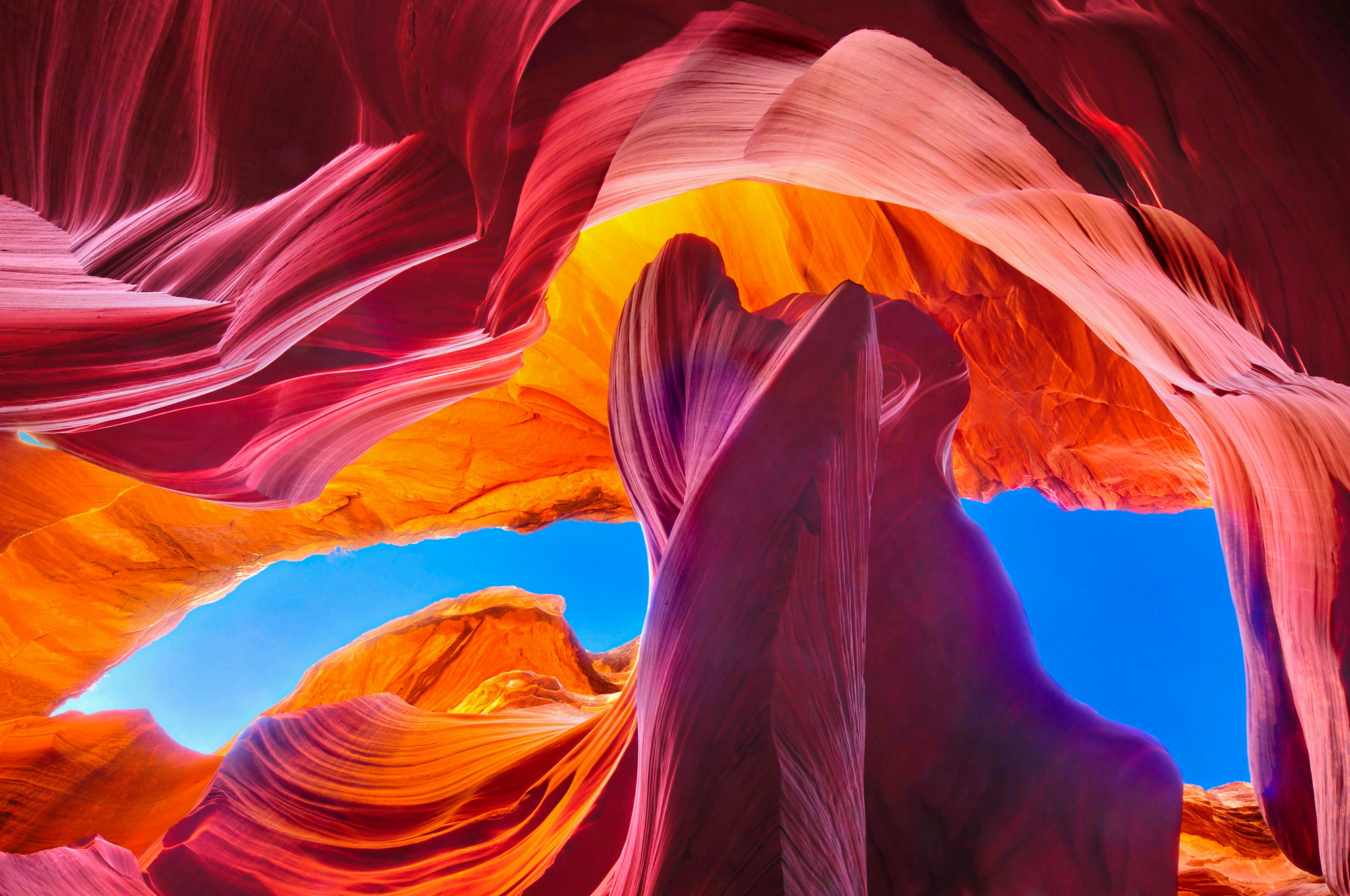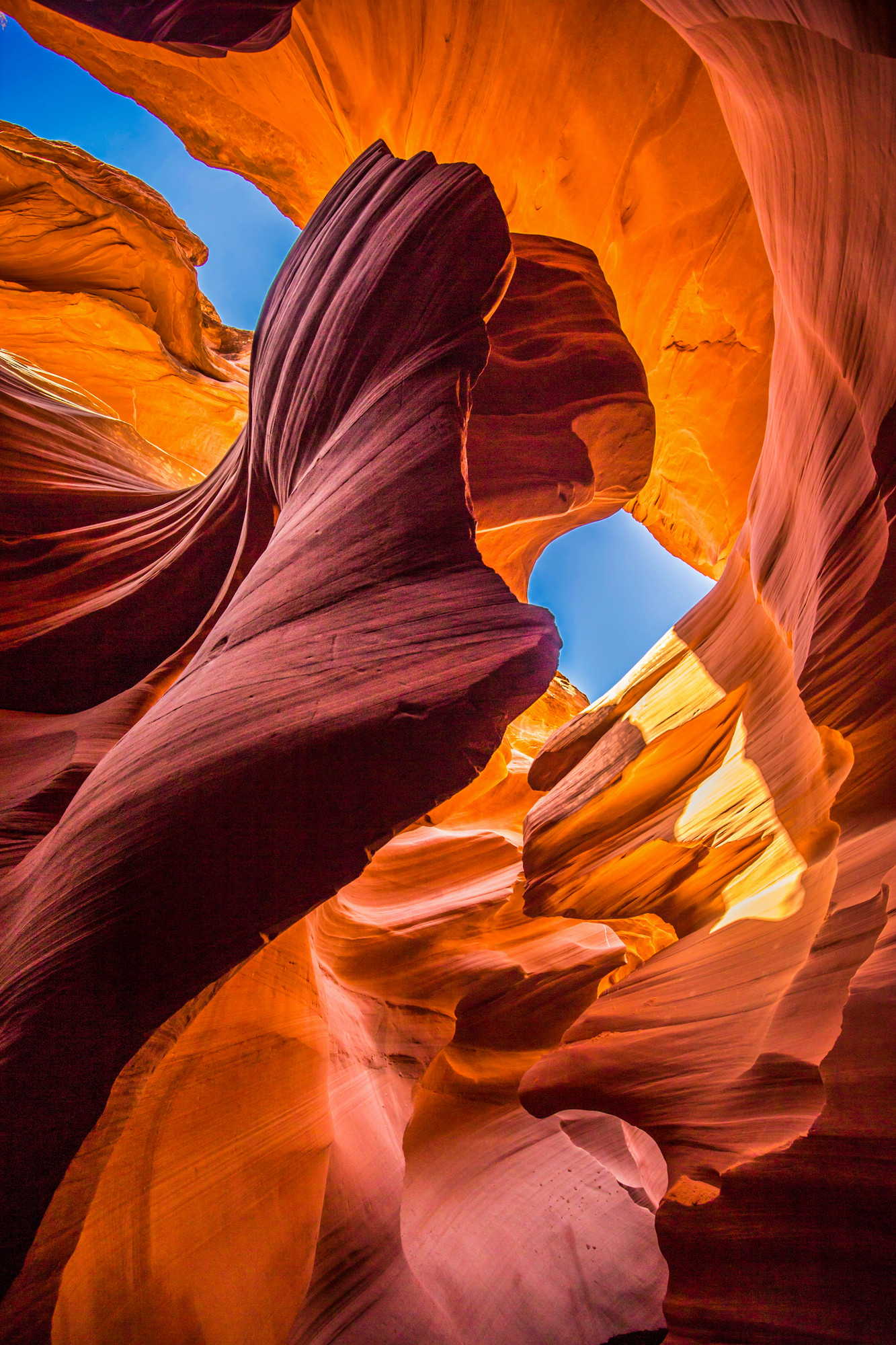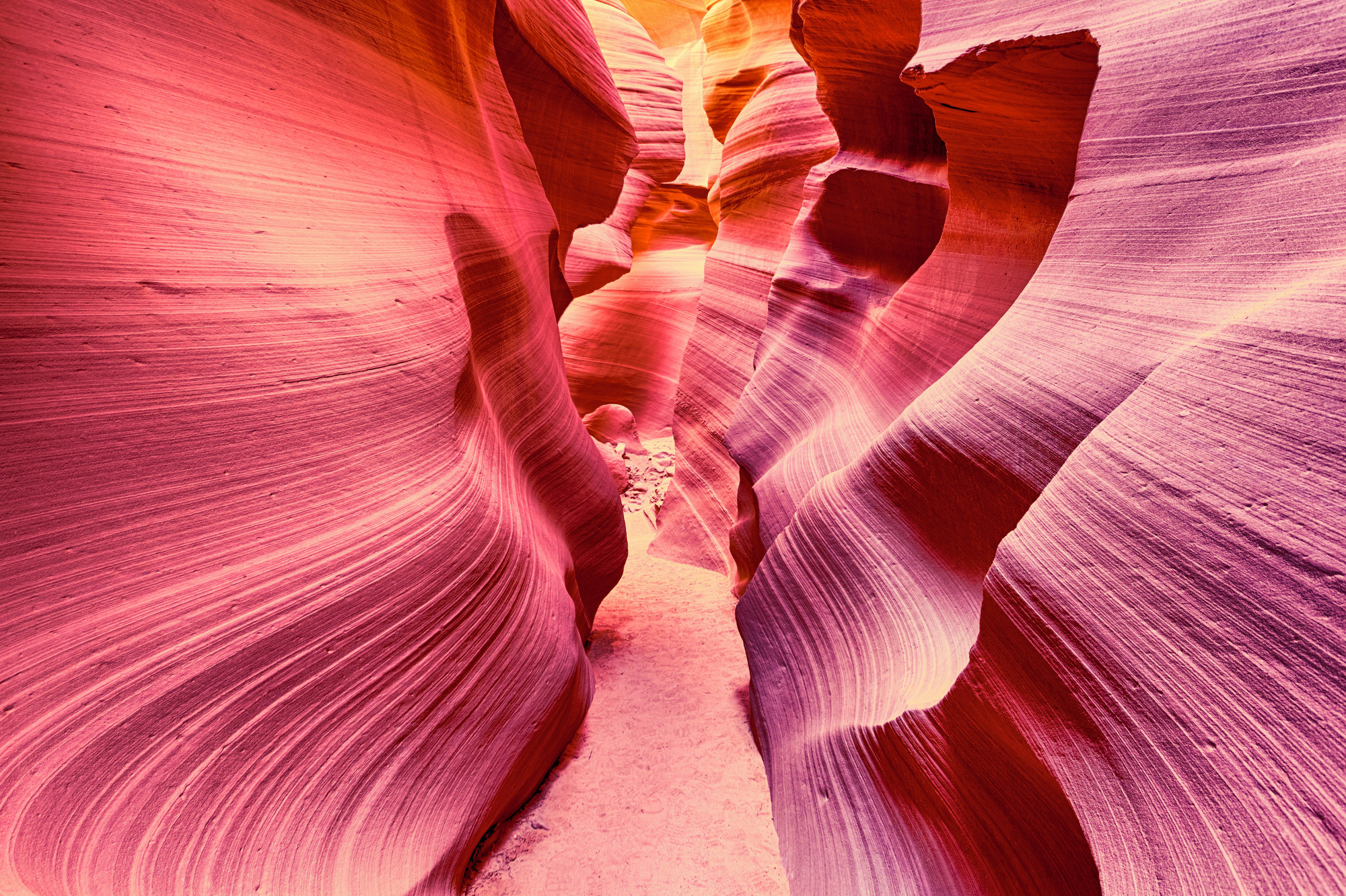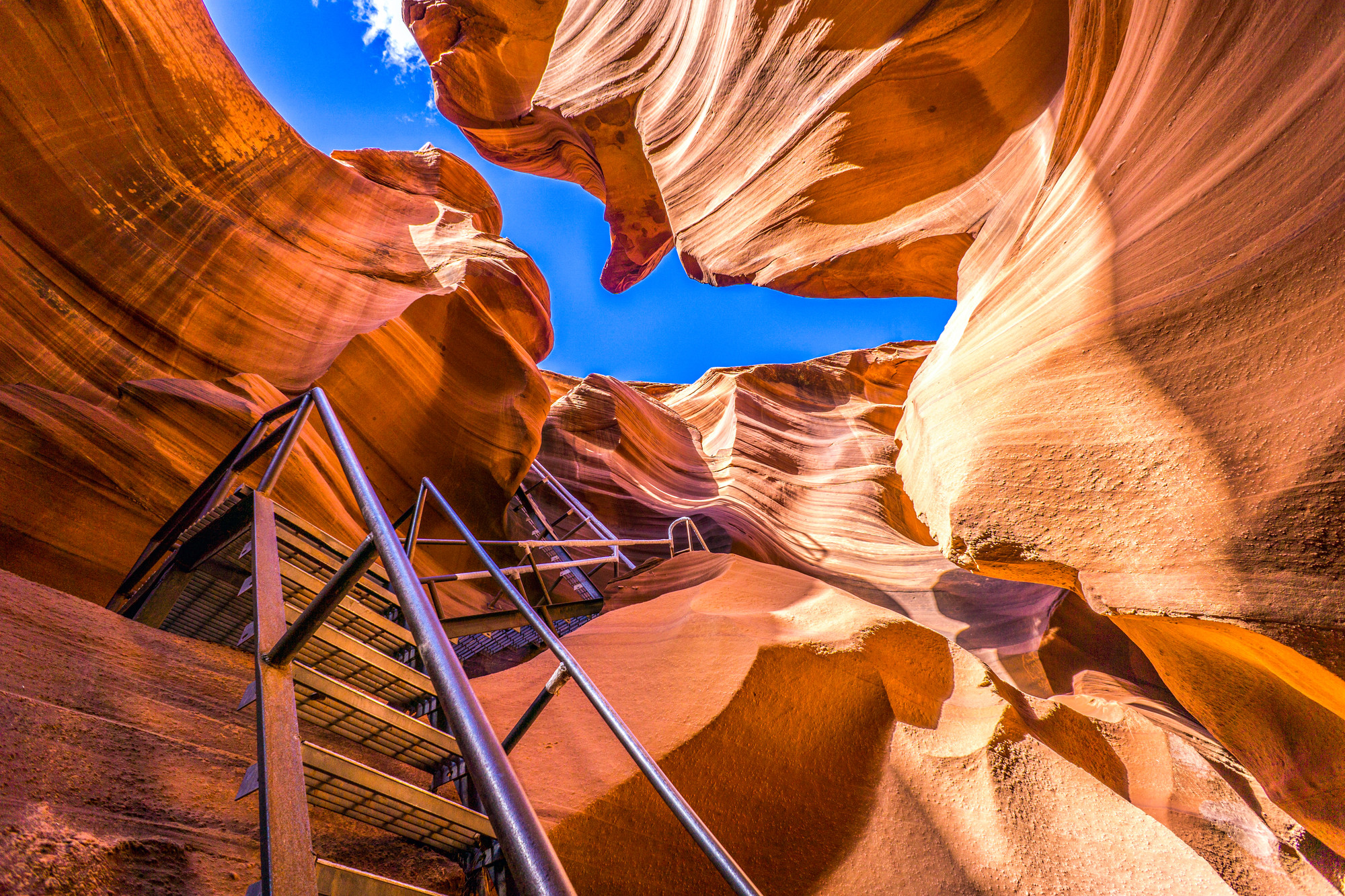Among the most visited and spectacular sections of Antelope Canyon, Lower Antelope Canyon—also known by its Navajo name Hazdistazí (meaning "spiral rock arches")—offers an unforgettable journey into the sculpted depths of the Earth. Longer, narrower, and requiring slightly more agility than its neighbor Upper Antelope Canyon, this slot canyon is famous for its intricate rock formations, vibrant colors, and the unique experience it offers to visitors. It promises a truly magical and unforgettable adventure.

Location
Lower Antelope Canyon is located just a few kilometers east of Page, Arizona, on Navajo Nation land.
GPS Coordinates : 36.903154,-111.413446

Visiting conditions
Access is only possible via guided tours led by authorized Navajo guides. These guides not only share valuable insights into the canyon's formation and Navajo culture, but also ensure the group's safety and know the best photo spots.
The tour is subject to a fee, which includes the permit to enter Navajo land. It is highly recommended to book tickets online well in advance, especially during high season (spring, summer, fall), as spots are limited and in high demand.
The entire experience—including check-in, a short approach walk, descent, canyon visit, and ascent—takes about 90 minutes. Time spent inside the canyon is approximately one hour.
The trail inside spans about 300 meters (1,000 feet), mostly on fine, sometimes uneven sand.
Entry is via a series of sturdy metal stairs, some of which are quite steep and narrow, leading down through a crack in the rock. Throughout the canyon, additional stairs and ladders help visitors navigate the terrain. Some agility and no major mobility issues are required. Exit is also via stairs.

Discovering Lower Antelope Canyon
Entering Lower Antelope Canyon feels like stepping into another world—a sanctuary sculpted by nature. From the first steps, visitors are struck by the smooth, flowing curves of the Navajo sandstone. Polished by water and wind, the walls rise in sinuous waves and stone drapes. Textures range from silky smooth to rougher patches, bearing witness to the elements' force. It's like walking inside a giant, organic sculpture.
The colors of the canyon are a show in themselves, shifting from deep orange to fiery red, with shades of pink, peach, and sometimes even purples and lavenders in the shadows. The colors change constantly depending on the time of day and sunlight angle.
While Lower Antelope Canyon is less known for direct light beams than Upper Antelope Canyon, light still plays a magical role. It filters through cracks above, creating striking contrasts between light and shadow. Sunrays reflect off the upper walls, casting a warm, golden glow downward and illuminating the lower sections with an almost otherworldly clarity. Every curve and corner is enhanced by this soft, indirect light.

The result is a truly enchanting atmosphere. One feels small and humbled by this natural masterpiece. The shapes sometimes evoke animals, faces, or frozen waves, sparking imagination. The relative silence—broken only by visitors' whispers and the guide's voice—adds to the sacred, timeless feeling. It's a full sensory journey, blending visual beauty, cool canyon air, and constant awe.
A visit to Lower Antelope Canyon is far more than a sightseeing stop: it is a dive into a mineral world of raw and poetic beauty. It's a privilege to walk through these passageways carved over millions of years—an experience that leaves a lasting impression on heart and soul.


 EN
EN FR
FR ES
ES DE
DE